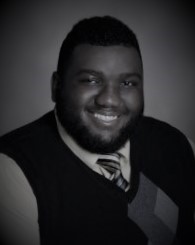A Greenwood Homecoming
 For some, the desire to teach and help mold the minds of the next generation comes at an early age. For others, the realization might come a bit later. For Quenton Gilmore, it came out of nowhere when he decided to take a break from his undergraduate career while studying at the University of Southern Mississippi in Hattiesburg, Mississippi.
For some, the desire to teach and help mold the minds of the next generation comes at an early age. For others, the realization might come a bit later. For Quenton Gilmore, it came out of nowhere when he decided to take a break from his undergraduate career while studying at the University of Southern Mississippi in Hattiesburg, Mississippi.
Gilmore, who grew up in Greenwood, Mississippi, says when he was growing up he wanted to be a doctor—spurred by the lack of affordable and quality health care he saw in his own community. Academically gifted, he stood out among his peers but was often ostracized from others and this contributed greatly to his shyness and his perceived lack of a self-identity. It was not until he attended the Mississippi School for Mathematics and Science in Columbus, Mississippi, where he was able to interact with a diverse group of like-minded students, that he found his true self. From that point forward, it was all bets off—with a once-shy kid from Greenwood figuring out how he could best make meaningful change in his community.
“I was recruited to teach in my hometown on an emergency teacher license,” he said. “I was able to help students improve and reach their next academic tier level. It also felt good working in my community—I was working in the same school that I was taught in. Now, I am a teacher teaching in the community that I was raised in—and I am grateful to be one.”
So now Gilmore is both a graduate student here at the University of Mississippi and a sixth grade science teacher—in his hometown of Greenwood.
As a teacher, Gilmore has learned that classroom management is one of the biggest hurdles young educators face early on. While Mississippi Teacher Corps did a great job preparing him and his peers for the classroom, he learned much while on the job. Gilmore said that as long as you remain consistent and fair, you will be just fine. By the end of his first year of teaching, he was starting to feel more comfortable. Then the COVID-19 pandemic hit the United States and shook things up.
When I asked Gilmore about the challenges he faced as an educator during the COVID-19 pandemic, he said the most obvious one was seeing a stark light shone on the disparities within public schools. Virtual learning is dependent on access to wifi or laptops, but many students do not necessarily have readily available wifi or a computer on which to work. It begs the question, how did the disparity in resources get this way and why does this exist? Gilmore pointed out many of these questions can find answers rooted in the historical impacts of slavery and the Jim Crow era.
But now, in 2020, Gilmore says we need to focus on asking how we can improve this and how can we prevent these gaps in the future. He acknowledges there is not necessarily a perfect answer, but it is his job—and that of others in education—to strive to provide the best education for ALL students. COVID-19 has been an uncomfortable situation, but Gilmore looks at this as an opportunity to improve policies and ultimately better serve students in the classroom.
So, while teaching definitely has it challenges—especially during a global pandemic—it is also filled with shining opportunities to make a difference in young students’ lives. Each day in the classroom brings a new adventure and this is especially true when you teach science. Whether it is demonstrating physics with magnets or describing in detail just what photosynthesis is, it is lessons like these that make the challenges seem to melt away—and for Gilmore, the real reward is when everything just clicks, and your students have that “lightbulb moment.”
“Another one of my favorite units to teach is life science. I normally get a lot of ‘Ohhhhh’ moments teaching this unit. The ‘Ohhhh’ moment is when the lightbulb clicks on for a student such as ‘Ohhh, that’s what a virus is,’ or ‘Ohhh, so that’s how plants get food’ It’s awesome!”
While Gilmore might not be serving his community during the COVID-19 pandemic in a health care clinic or hospital, he is still on the frontlines as an educator, working hard to ensure his students can have some sense of normalcy in school during this challenging time. And I think many can agree, educators such as Gilmore have showcased an immense dedication to their students during this pandemic.